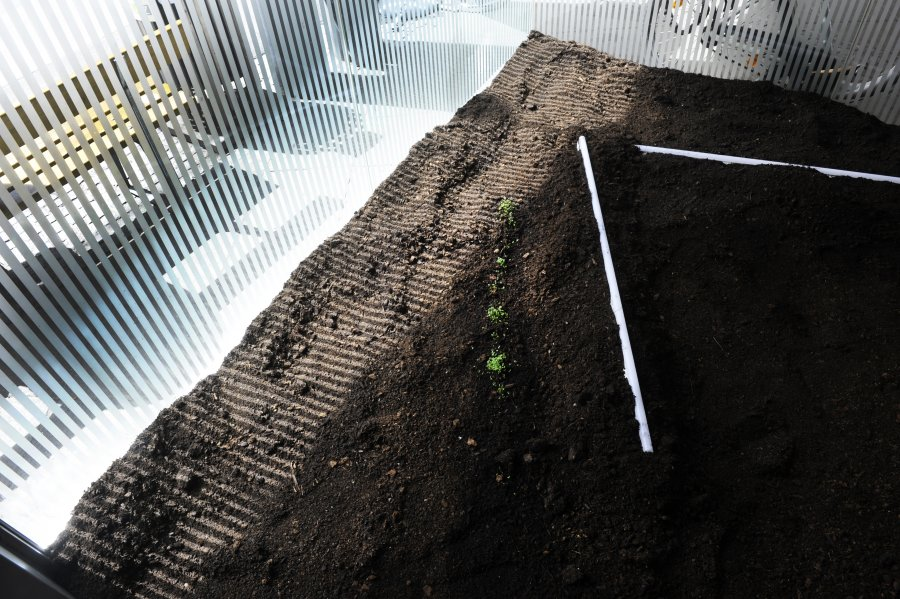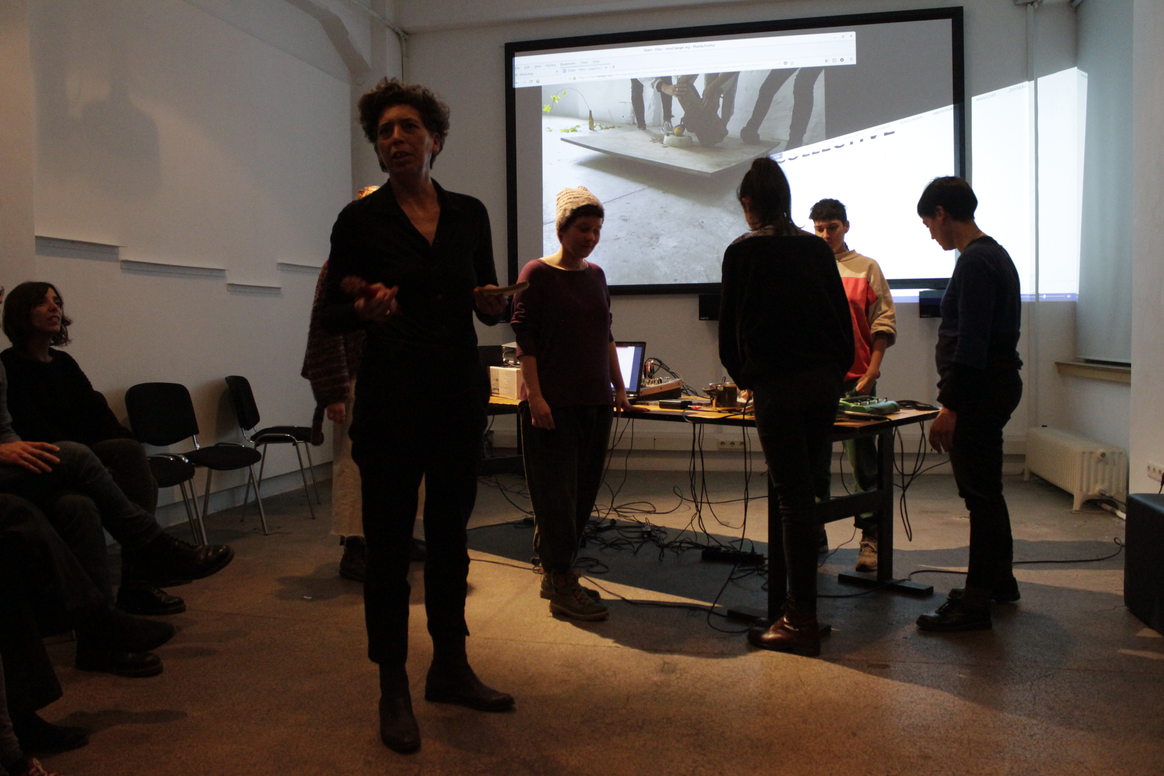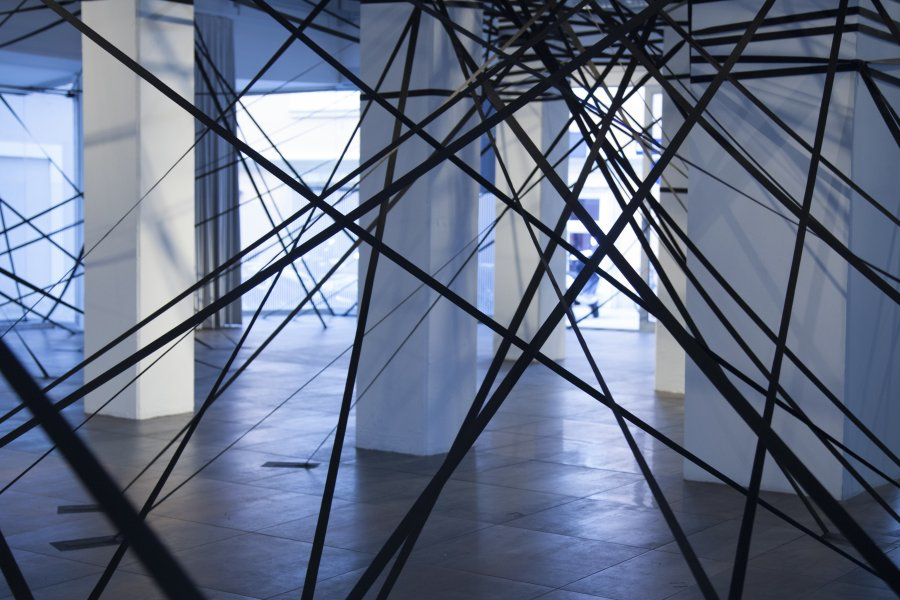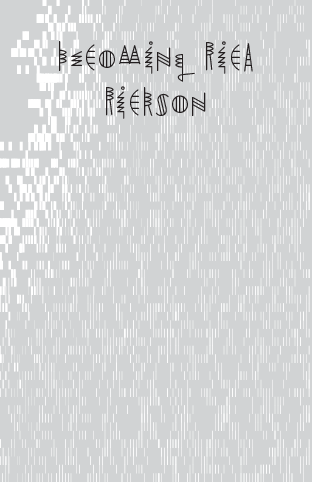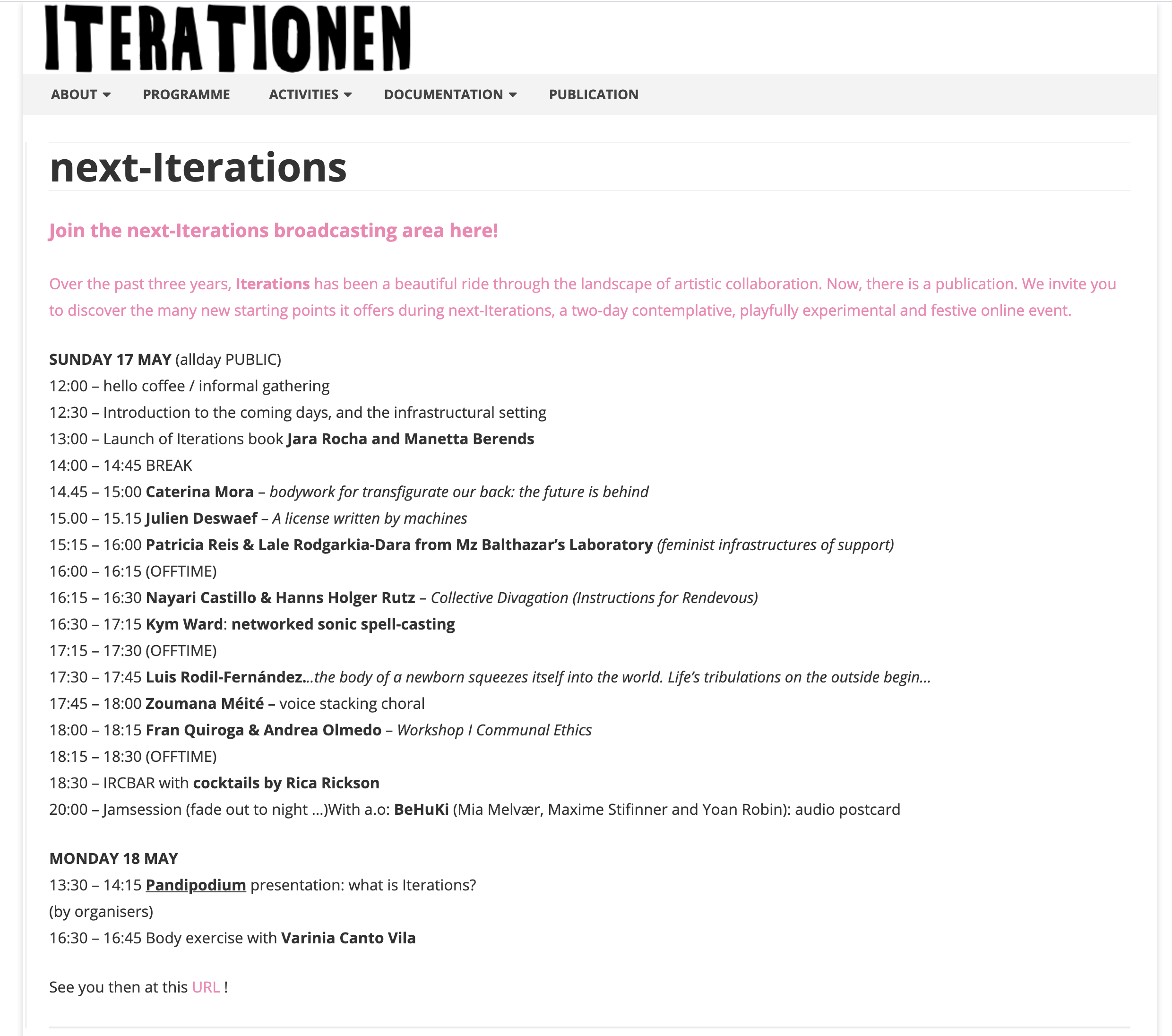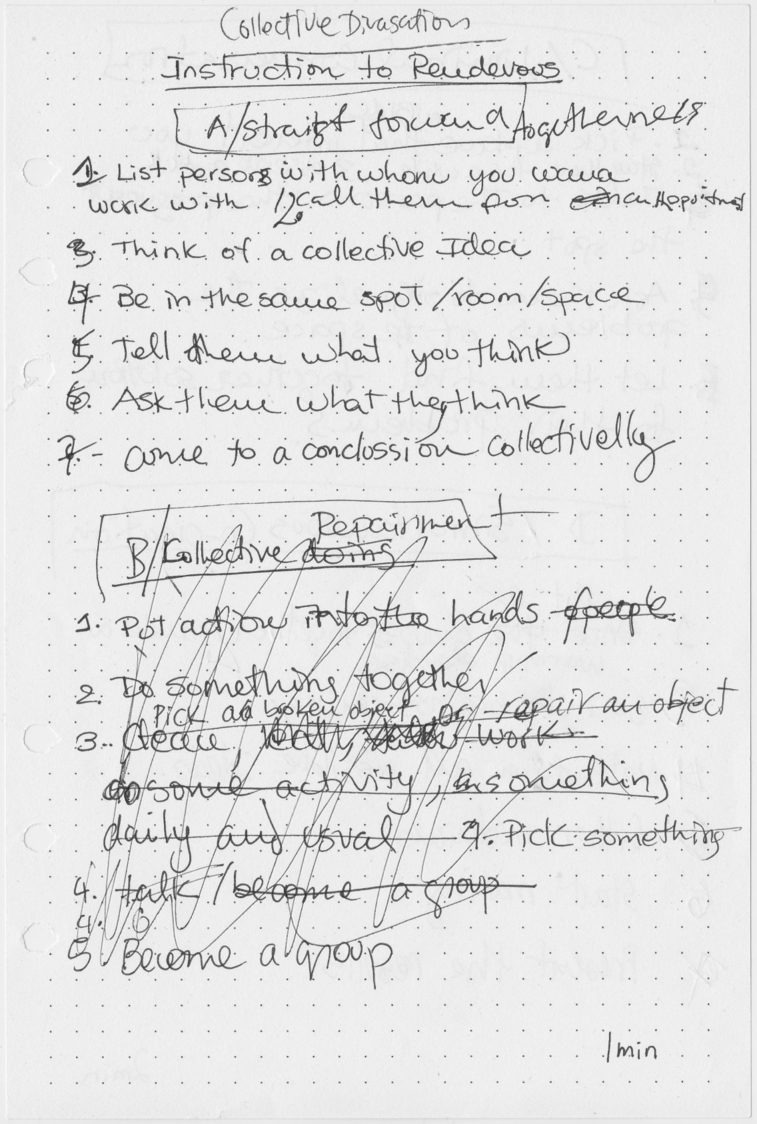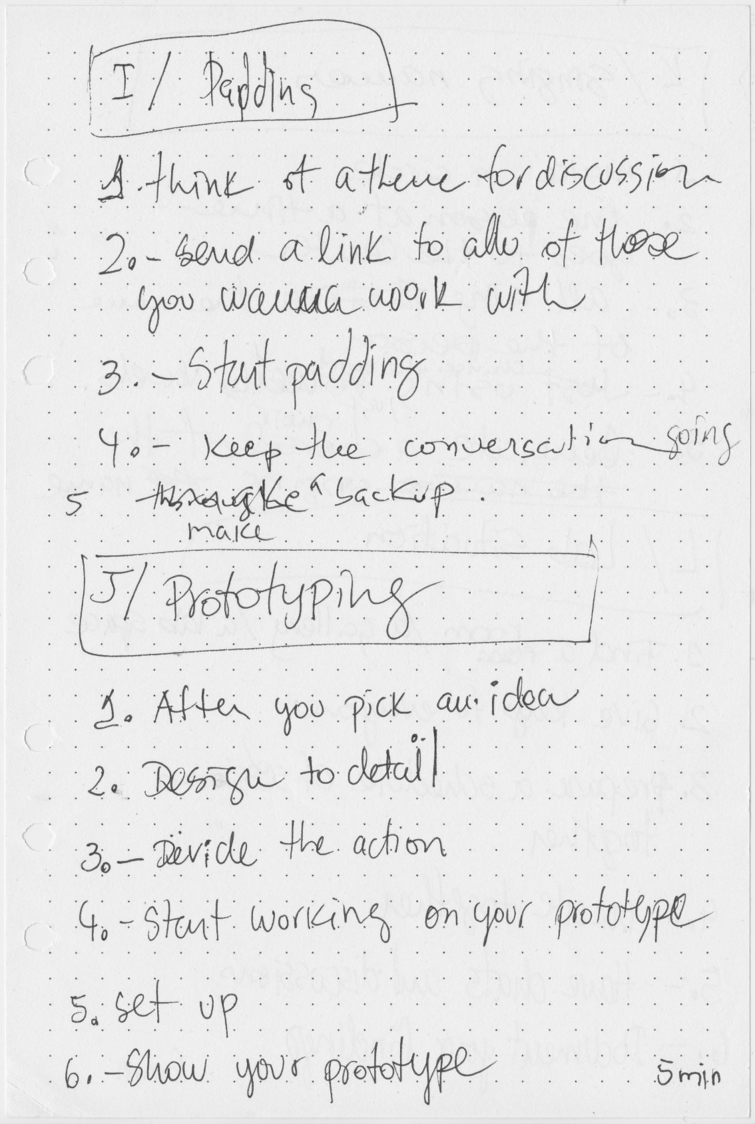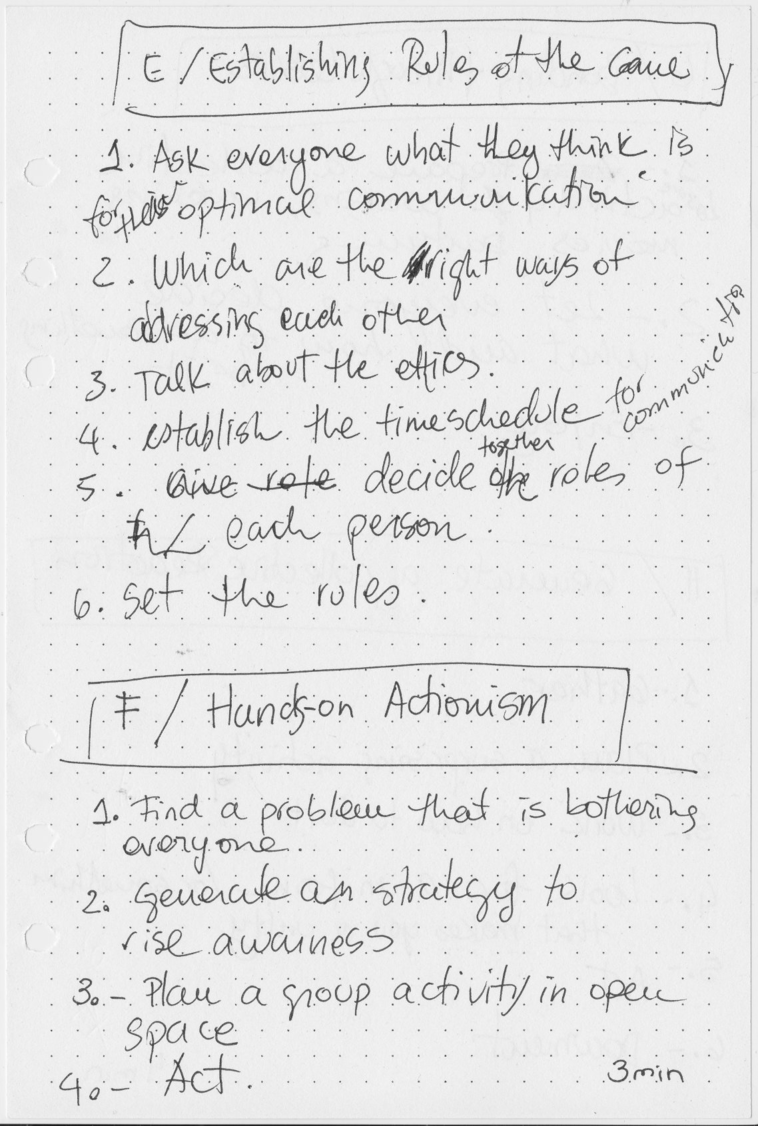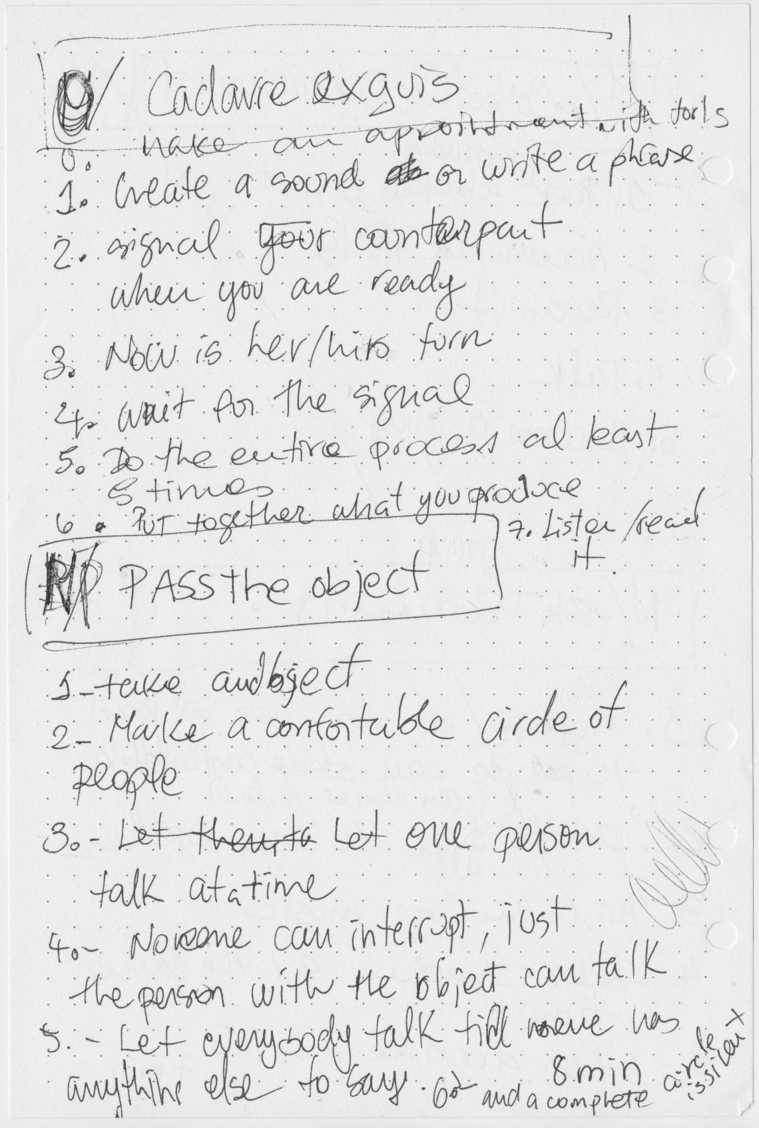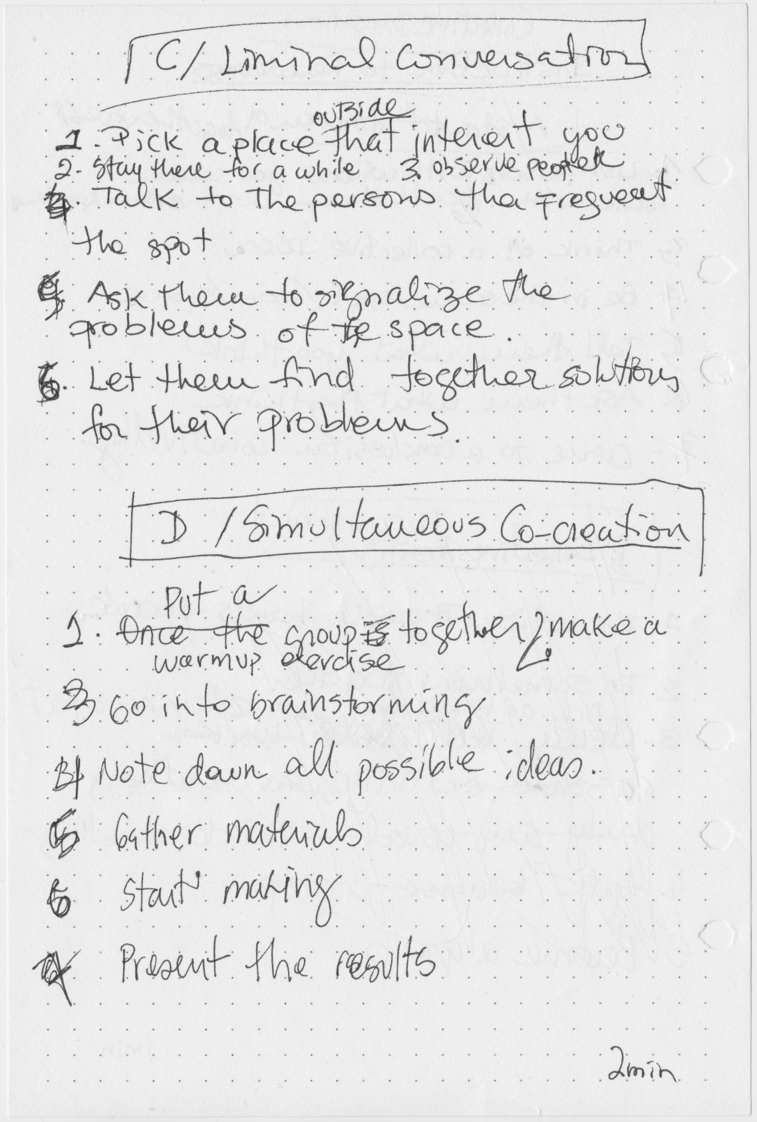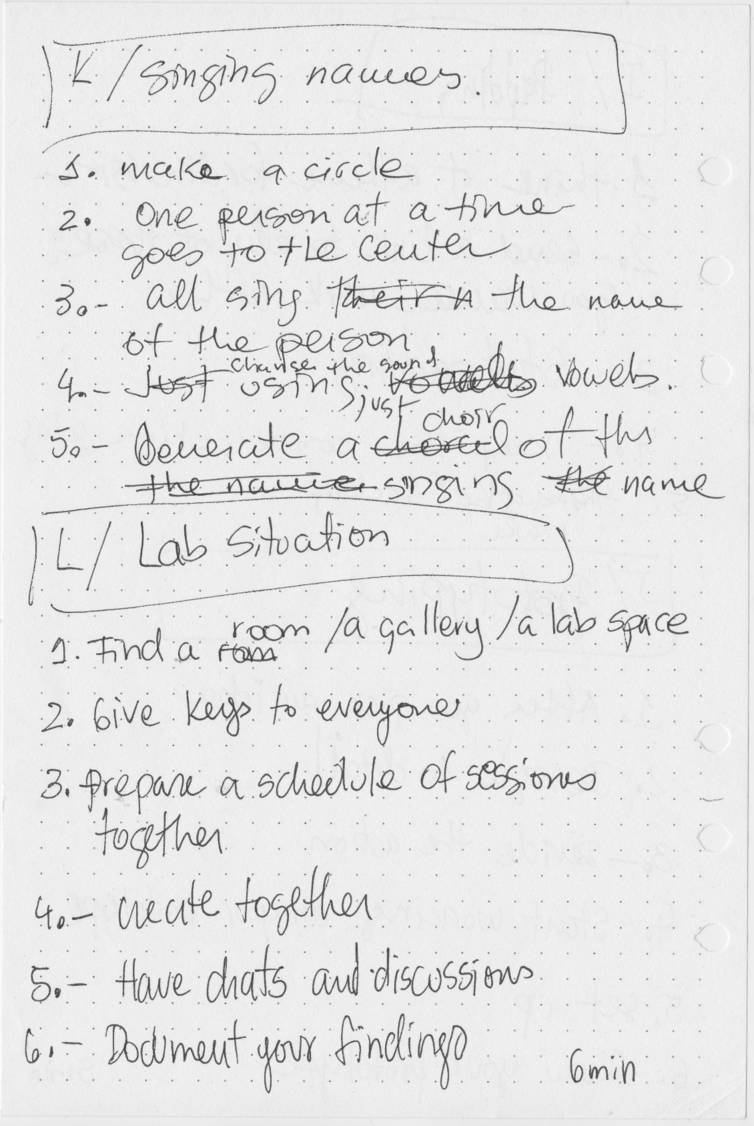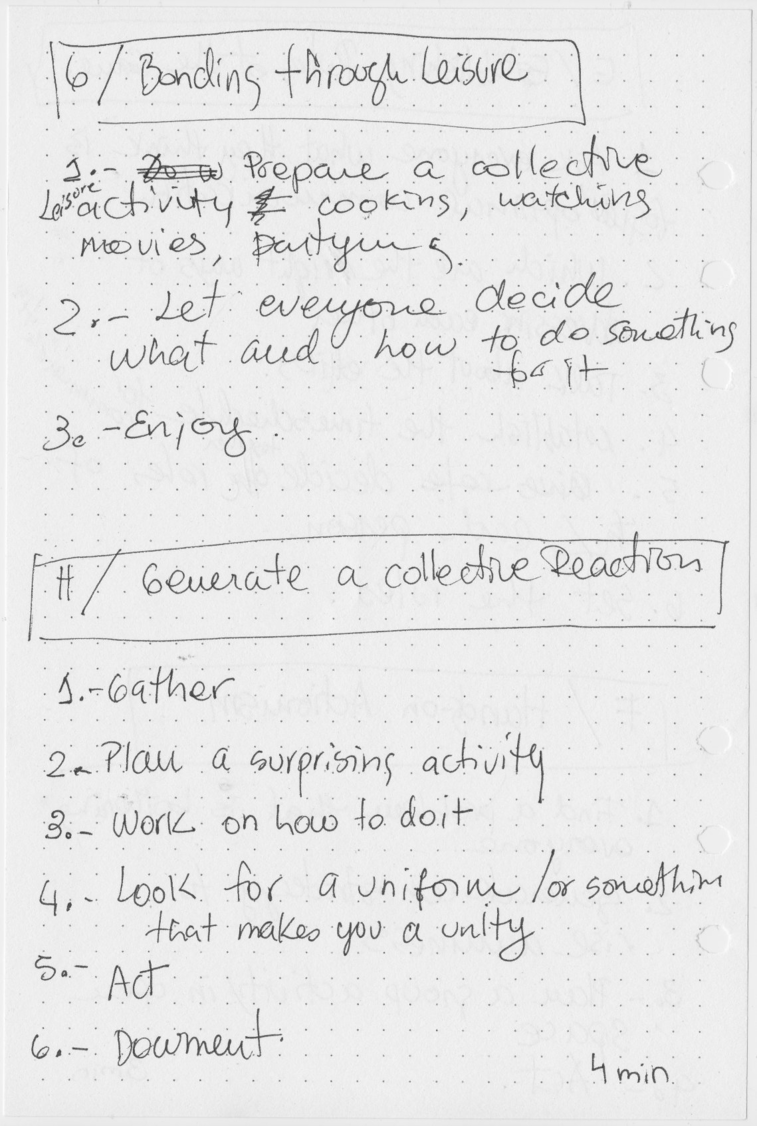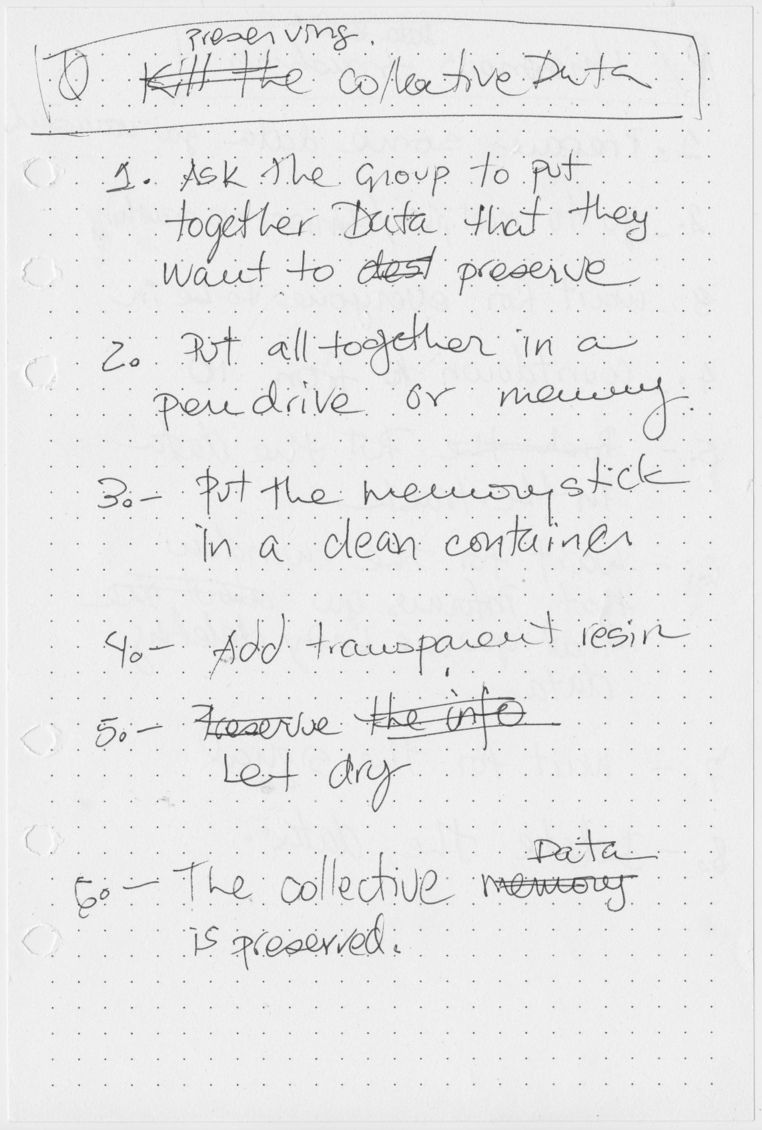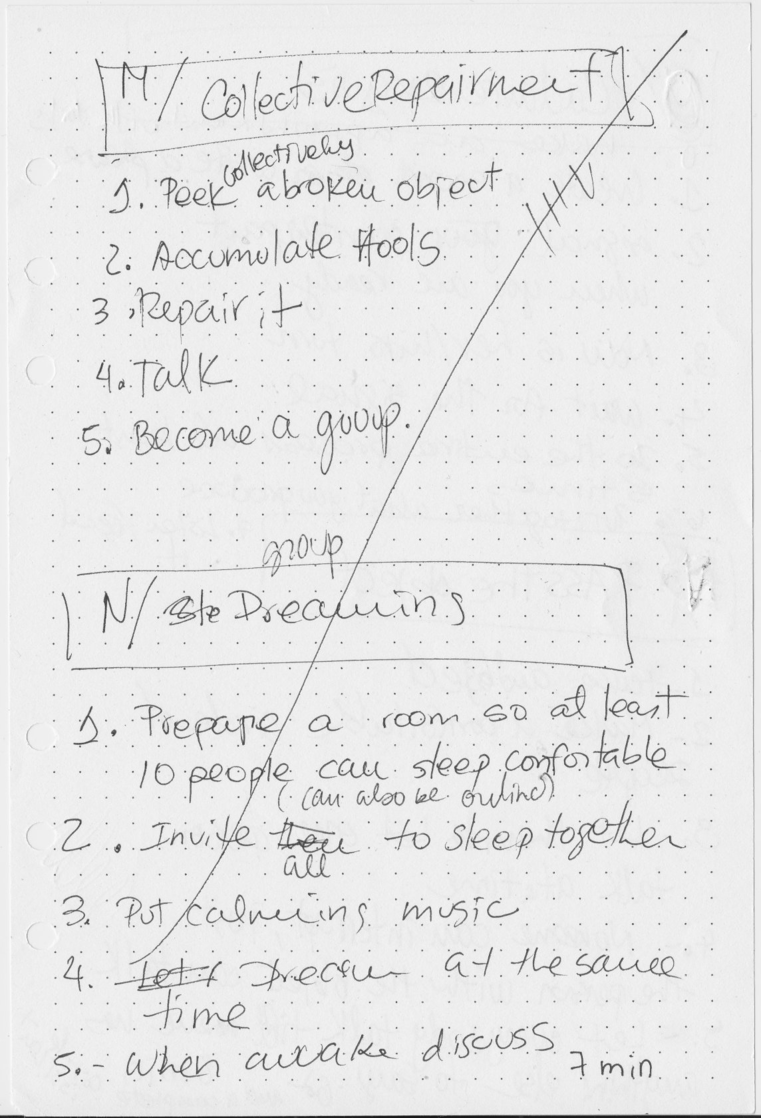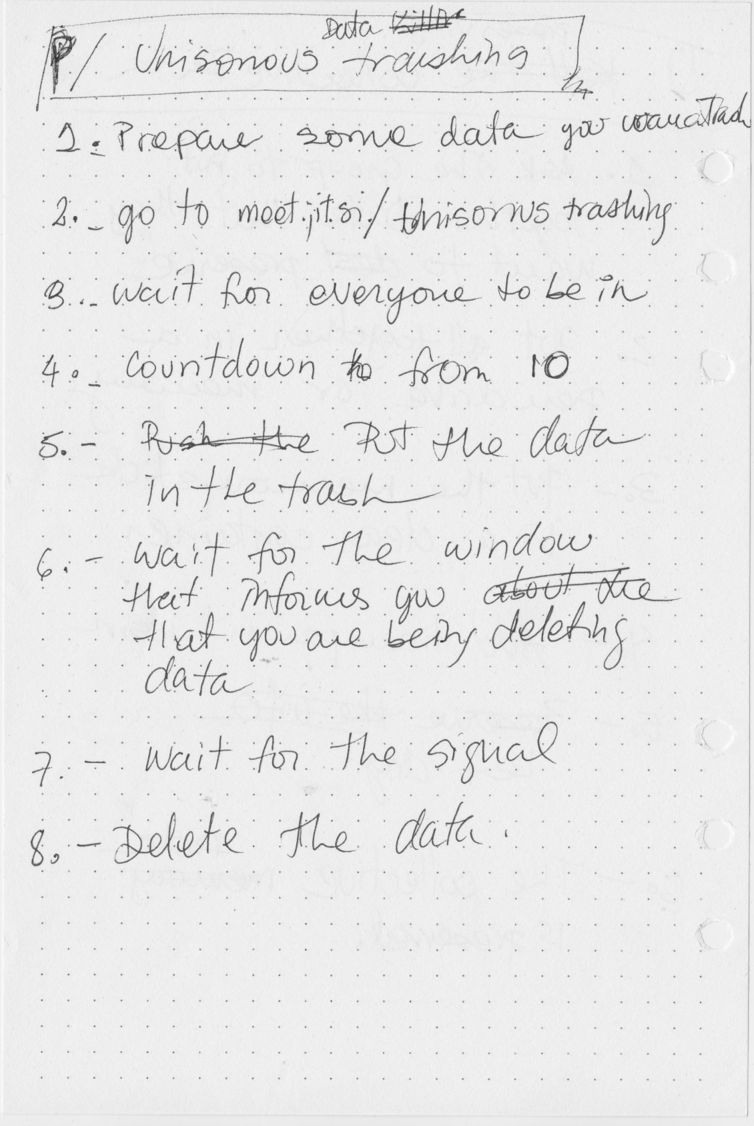During around three years of different iterations, this project attempted to understand moments of collaboration by enabling artists to come together in residency and exhibition processes. These experiments, mostly to discuss the possibilities and reach of future artistic collaborations in digitally networked contexts, grouped artists and other practitioners to create speculative works around collective operation modes.
Iterations involved translating open source methodologies originating from the digital realm into analogue art-practices, e.g. the methodic recurrence produced a series of conflicts and circumstances that enriched the process of creation.
Seeking a common production, the experiments demanded particular group dynamics hard to isolate. Nevertheless, several patterns were traced and discoveries happened. When we analyse the different gatherings we encounter that each institution imprinted particularities in the creation process. On the one hand, each institution was in charge of creating a residency, and the process to invite/select the artists was different among them. From word of mouth to selection by open call, these different proceedings had a substantial repercussion on the output, that is to say, the process of coming together was determined by the selection, and by doing so, based on the institutional background. On the other hand, the different spaces impacted the process of creation by articulating materialities, and ways of production were determined by the in-situ situation. For example: the residency of Transformatorio that took place in Giampirelli, Sicily, Italy, was made in cooperation with the town, and the type of space and the public were intertwined in the type of propositions that appeared—theatre pieces, work in public space, concerts, tours, etc. Here the number of artists (around 40) made a “total” or common produce, a big compound in public space. In the case of Iterations Graz, in contrast, the residency took place among five artists directly selected by the institution, and two artists selected by the others (one from the past residency, one of the future residency). This iteration was more intimate, and so the products (iterations-0 and iterations-phase-ii), both in-situ exhibitions, showed a strong situated relation with the gallery space and a common production.
This double agency of institutional strength and spatiality needs to be seen necessarily as a political influence over the artistic product—coming together by decision into a space stipulates then a form of arrival with less freedom, at least, than in the natural conditions of a self-directed collective formation.
“Space-commoning is not, therefore, simply the sharing of space, considered as a resource or an asset, but a set of practices and inventive imaginaries which explore the emancipating potentialities of sharing. Common space is both a concrete product of collectively developed institutions of sharing and one of the crucial means through which these institutions take shape and shape those who shape them.” (Stavrides, 2016, p. 7)
Sharing depends on the surrounding and on the persons that articulate the situation of commoning.
Processual Togetherness
During the iterative stages, it was possible to distinguish some conditions of the collective process. The contact or synapsis is the first approach that occurs among the artists, getting to know each other through activities of leisure (cooking, eating, smoking), and it seems to be fundamental to establish a minimal base of trust to start the co-creation process. This process is not a complete dilution in one another, it seems to happen as a sort of membrane by which information is being filtered. In this zone of exchange a cloud of knowledge and practices brings together the artists. It was interesting to see the use of resources of communication, e.g. the “padding”. Traces of working methods of one artist appear to be reaching another in a course that could be called contamination. Far from the negative connotation that this term acquires from religious contexts or the hygiene methaphors, in the artistic process, contamination is a two-way street. It requires the flexibility to understand the other and at the same time, the strength to keep individuality. Most of the time this leads to becoming another, by which the forces that encounter give in a part of themselves to construct a new individual or form, a compound that produces, by negotiation, very different creative output than the individuality. This form not necessarily loses depth, but it starts a completely independent way, which does not belong to one or another. But until now the process seems to be centred in a dialogical argumentation, that is contradictory to the collective process structured under Iterations. It is clearly understood that these processes are not between two forces, but multiple, and vary in intensity and form depending greatly on the group. We can denominate this stadium complex symbiosis, a place of coexistence where the bodies act in constellation, together but also in independence. As mentioned by Vera John-Steiner, a position from which ideas appear—“Generative ideas emerge from joint thinking, from significant conversations, and form sustained, shared struggles to achieve new insights by partners in thought.” (John-Steiner, 2000, p. 3) This step seems to be the most relevant for the inquiry of the common production, and it is fundamental for the question on simultaneous work.
References
- John-Steiner, Vera (2000). Creative Collaborations. Oxford: Oxford University Press.
- Lewis, Hyde (2007). The Gift: Creativity and the Artist in the Modern World. New York: Vintage Books.
- Schultz, Sarah and Sarah Peters (2012). “Introduction”. In: Open Field: Conversations on the Commons. Ed. by Sarah Schultz and Sarah Peters. New York: Walker Art Center.
- Stavrides, Stavros (2016). Common Space: The City as Commons. London: Zed Books.
Differentiation / On Failure
As any experiment, Iterations accumulated some problems, originating in this case in the group consolidation form. For each residency the group came together through an artificial situation, so to speak, where the previous experience as a collective was inexistent. This lead to focus on daily subsistence and internal dynamics, rather than on the common production. It became apparent over the course of the days. In any case, timing is an important factor in the generation of a common creation or product made in collective form. The artificial dynamics also induced discomfort among some artists, who felt the incursion of a laboratory test. The tension between the common product, mostly in the realm of ideas, and the ownership opened a question that seems to be the initial preposition for the institutions—a common process will lead to a common produce. But there is really no unique product born out of the residencies, even if in some cases (e.g. Iterations at Hangar, Barcelona) the artists became a unified acting group, a collective with new a body and the personality of “Rica Rickson”, a fictive collective persona that represented the voice of the group in residency.
Therefore, to whom belongs the work of art? And if to nobody, as we expected from something created in the commons, how is it possible to distribute or further use this new compound? The rights to the work, the common license, were a pervasive discussion topic during the entire project, this inquiry accompanied the project until the final presentation, when Julian Deswaef instrumentalised our questioning within his “A license written by machines“. But this questioning, to whom belongs the work of art, was not only a shadow over the group dynamics; it also represents a fundamental problem for the future form of the investigation, including the future usage of the material at hand. It is true that the symbiotic body could act in individuality, but it seems difficult to understand the systemics of separation. How to avoid that strong personalities, common in a group of artists, override the experience of the quiet ones? How can we balance the system? In answer to this question, we consider that the innovative way to deal with the situation is to make a novel proposition: a simultaneous creation, a process in conjunction but independence.
Special Tool
Fundamental to the project was the handover—a self-directed action to pass over some of the knowledge of the previous iteration. These actions were very different: The first handover was a song in Sicilian language, given to a group of the participants of the next Iteration; the second handover took place in Vienna, with the re-enactment of a performance conceived for Hangar in Barcelona, where Rica Rickson analysed ontologically the content of the umbrella project, using the text as a narrative source. The physical and third handover in Brussels contained different elements of the installation in Graz. In all of the handovers other materials were also passed from hand to hand (code, photography, recordings). An interesting interpretation is that the handover is the deliberate giving of a part of the process lived. This gift represents then the act of conformation of the community, the moment by which the two residencies become a bridge— “Both anarchism and gift exchange share the assumption that it is not when a part of the self is inhibited and restrained, but when a part of the self is given away, that community appears” (Lewis, 2007).
Physical Output
Accompanied by different forms of output, the experimental gatherings served as a pre-sequel to other instances of commoning. Several exhibitions showed part of the process and results. Notwithstanding, even more important is what was not included, the surplus or by-product. Many of these excessive contents are included in the repository and will be part of the online site in the future. The entire project worked not as a closed system, but as an open-ended possibility to be used in the future. That is how the online conference Next-Iterations was a decisive step towards the negotiation between analog/digital. During the conference, we (Hanns Holger Rutz and Nayarí Castillo) presented the piece “Collective Divagation: Instructions for Rendezvous”, an online experiment using the platform while reciting and improvising at the same time. Next-Iteration was also a place for presenting the publication which declares the method in detail, and also poses questions for the future of collectivity.

